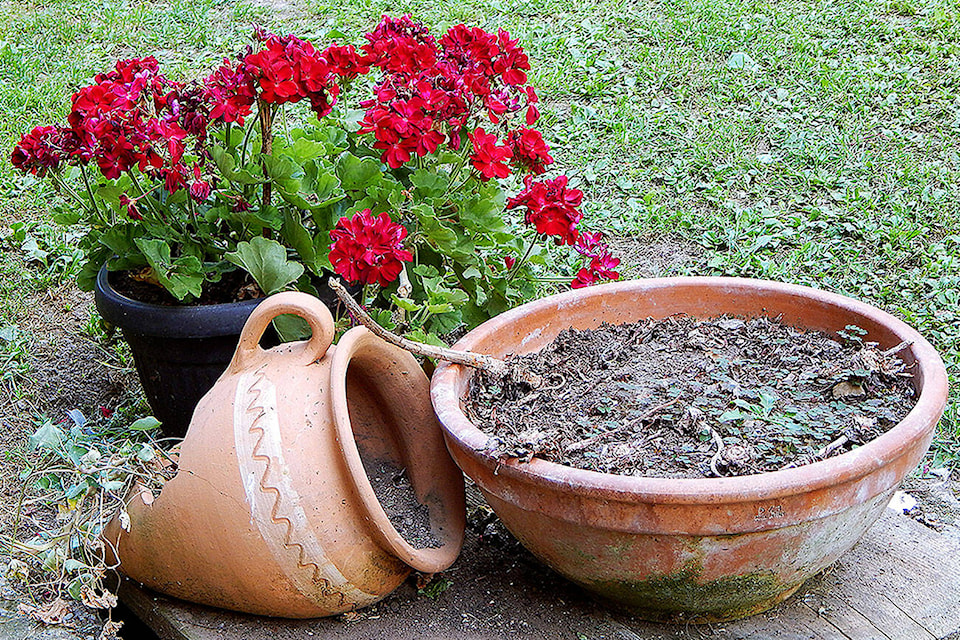Jocelyne Sewell
A Gardener’s Diary
Looking forward to another gardening season and entering my 12th year of writing the gardening column.
Because of the very early frost of last November, a lot of chores were left undone. I should not blame this on the weather as this happens on a regular basis.
Reading through some Old Farmer’s Almanac magazine, I found this tip about using cinnamon in the garden and how to clean up your flower pots.
Cinnamon uses for plants and gardening:
Cinnamon is also a natural way to deter pests in the home or garden, especially ants who wander into your house. Sprinkle the spice on any paths leading into your home (or greenhouse). Also, if you have a sandbox, mixing in cinnamon will keep ants away.
Use cinnamon with new cuttings to stimulate their roots. Cinnamon is an anti-fungal agent. Just roll the cut ends in cinnamon powder before setting in soil.
Finally, cinnamon’s anti-fungal powers are helpful when starting new seeds and growing seedlings. Mix with water in a spray bottle to spray the potting soil and plant stems where they meet the soil. It will keep mushrooms and any fungus away to avoid damping off disease.
Some of my pots still have some dead flowers in them. I just piled them up in the greenhouse for winter. Now comes the time to clean up.
I will put the dead plants in the compost bin and empty the old soil. If the soil is filled with roots, I will put that also in the compost bin. If it breaks up easily, I will use some of it in the beds. I have reused some of the old soil before in my flower pots but with some addition of new soil, compost and organic fertilizer. I never had any problems.
To disinfect the pots, soak clay and plastic pots in a solution of 10 parts water to one part bleach for 10 minutes to one hour. Bleach is a harsh chemical, so take precautions – wear gloves and eye protection and old clothes. You can substitute vinegar for the bleach if you want, just soak the pots for a few hours longer. This will kill off those bug eggs and disease spores but also help to loosen the white, crusty mineral salts that have accumulated. I don’t use bleach but I use vinegar.
I also use Dr. Bronner’s organic pure-castile soap to wash some of them. There are so many uses for this soap. You can use it on your body but also you can make your own pesticide spray. You can read about it at catchgrowcook.com/homemade-insecticidal-soap-recipe-with-dr-bronners/.
Dr. Bronner’s is a highly recommended brand of castile soap to use when creating an insecticidal spray.
The peppermint castile liquid soap is the most popular option since peppermint is a natural insect repellent. This is taken from the above website:
“After the pots have soaked for some time, scour the pots with a stiff bristled brush or steel wool to remove algae and mildew and other deposits.
“Scrub off the white crust as well as you can. Sometimes it is stubborn and hard to remove from old clay pots. Plastic is much easier to clean.
“Then put pots in a bucket or sink filled a dish detergent and water solution. If mineral deposits remain, use a knife to scrape them off.
“Rinse clean and let them dry in the sunshine if possible. When the pots are dry, stack and store them or use them for the new season.”
For more information: call 250-558-4556 or email jocelynesewell@gmail.com.
READ MORE: Early Okanagan winter, mother nature must be confused
READ MORE: RCMP drum up special show for 150th anniversary at Vernon Tattoo
@VernonNews
newsroom@vernonmorningstar.com
Like us on Facebook and follow us on Twitter
